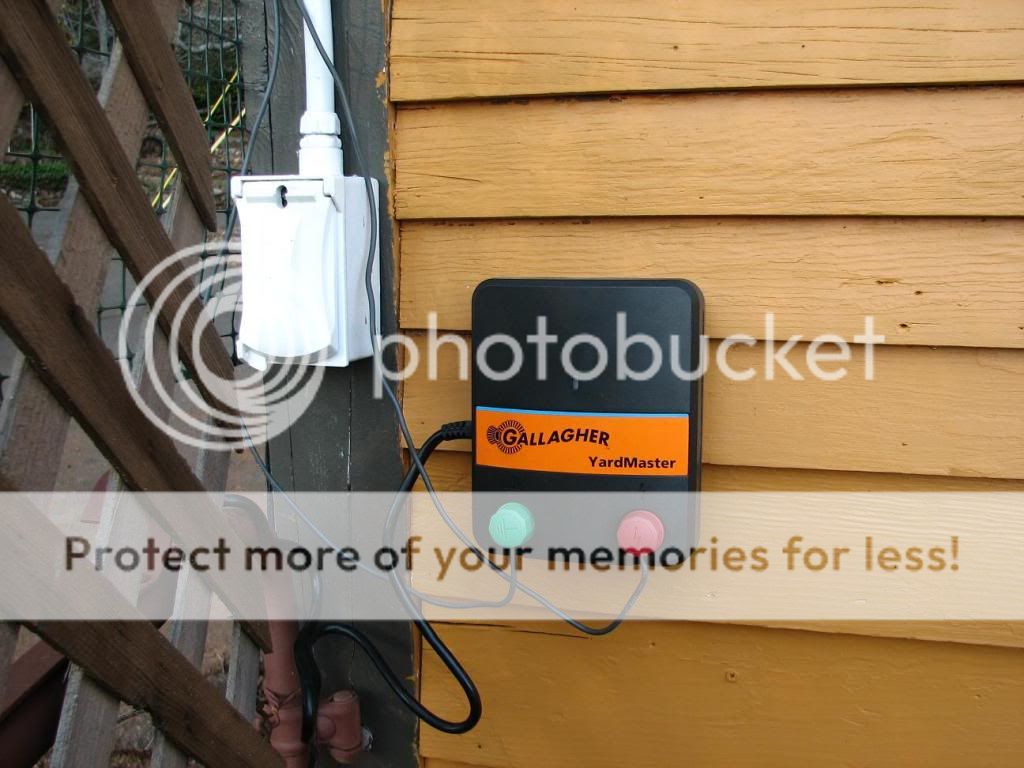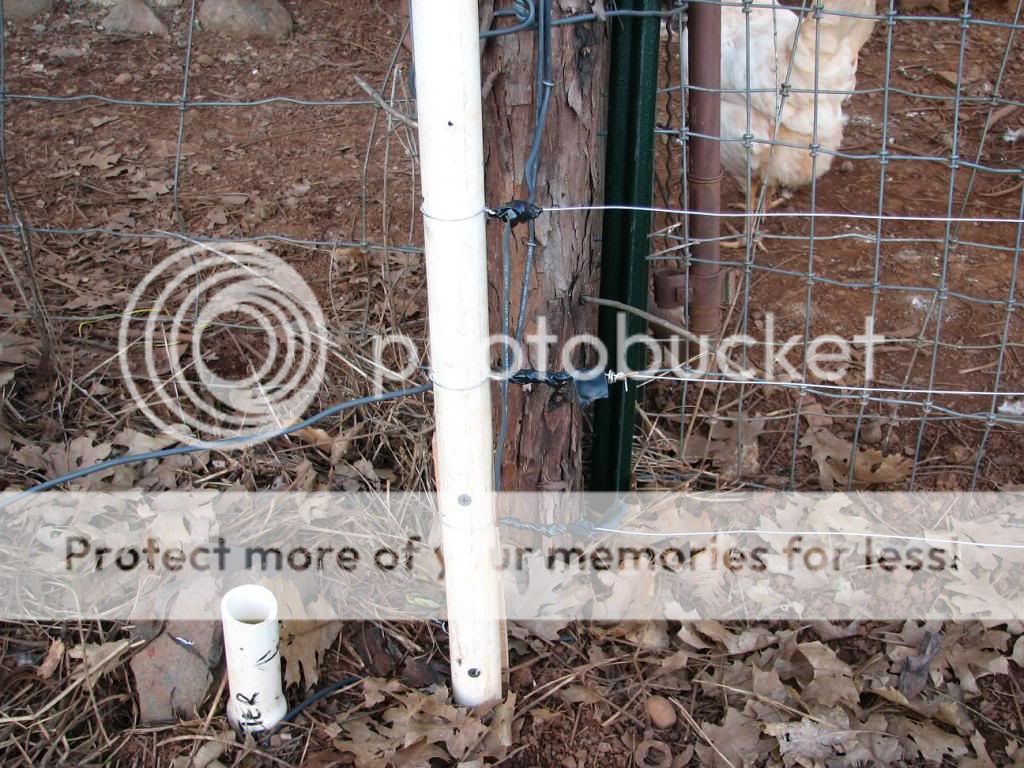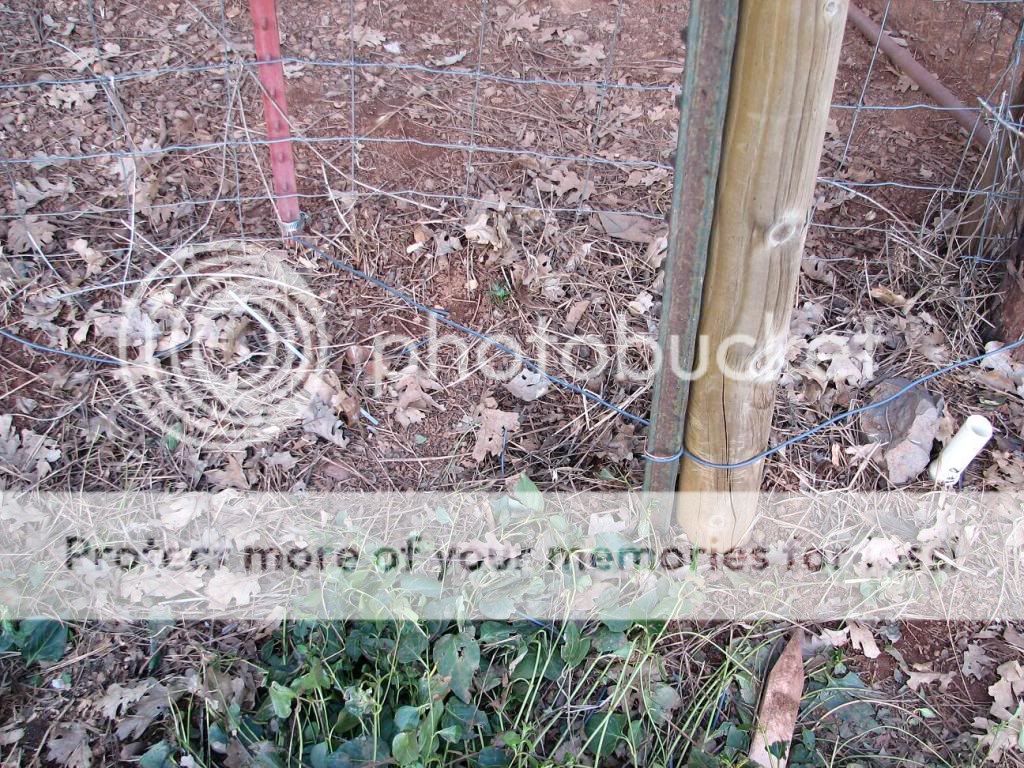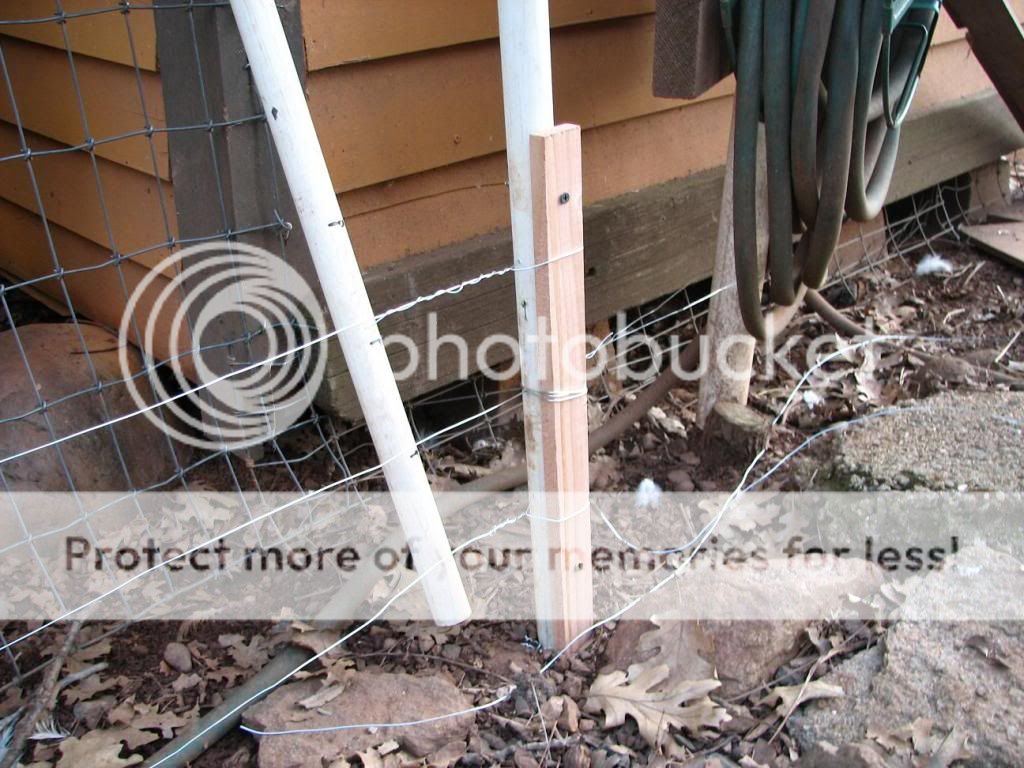Britcheflee
Well-known Member
Well, I have been working away on my electric fence - put it all up and I got the wife to check it (he he he) NOTHING!
I have enclosed some pics maybe they give a clue to my mistake.
I have the gallagher system:

Yes I plugged it in and the light was flashing - I eventually plucked up enough courage and held on to the two posts...WHAM! Its working there.
I have two wires one going to the top and bottom wire of the fence and one from the ground on the device to the middle wire - from that middle wire I have it also grounded to a post: See next two pics:

The live wire goes to the top wire then bypasses ground and to the bottom wire.
Here is the ground:

This is where I think I may have made my mistake - the picture in the handbook shows the ground wire going from the device to the middle wire and a separate one going to the ground clamp.
By running a single wire from the ground side of the machine to the middle wire and then from the middle wire to the ground post am I doing something wrong?
Here is the end of the line:

that middle wire is just attached to something to give it tension. The wires just end there.
Something obvious I am doing wrong?
I have enclosed some pics maybe they give a clue to my mistake.
I have the gallagher system:

Yes I plugged it in and the light was flashing - I eventually plucked up enough courage and held on to the two posts...WHAM! Its working there.
I have two wires one going to the top and bottom wire of the fence and one from the ground on the device to the middle wire - from that middle wire I have it also grounded to a post: See next two pics:

The live wire goes to the top wire then bypasses ground and to the bottom wire.
Here is the ground:

This is where I think I may have made my mistake - the picture in the handbook shows the ground wire going from the device to the middle wire and a separate one going to the ground clamp.
By running a single wire from the ground side of the machine to the middle wire and then from the middle wire to the ground post am I doing something wrong?
Here is the end of the line:

that middle wire is just attached to something to give it tension. The wires just end there.
Something obvious I am doing wrong?

